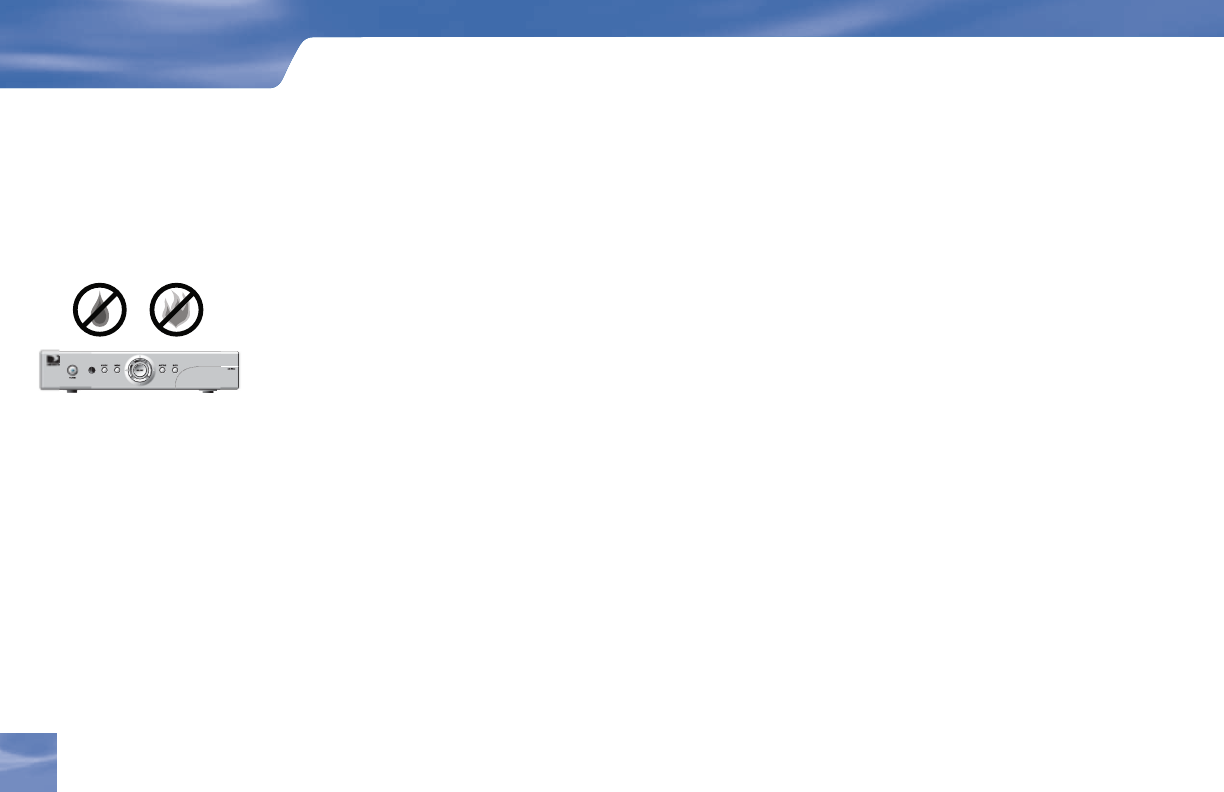
• Ensure proper ventilation — the vent slots on the DIRECTV Receiver must be left uncovered
to allow proper airfl ow to the unit. Blocking the airfl ow to the unit could impair performance or
damage your receiver and other components.
• Do not stack electronic components or other objects on top of the DIRECTV Receiver. Also, do
not stack the receiver on top of a “hot component” such as an audio power amplifi er.
• Protect your components from power surges by connecting all the components before plugging any
power cords into the wall outlet. Use of a surge protector is also recommended.
• Don’t overload power outlets or extension cords, which can result in the risk of fi re or shock. It’s
also important to use only the type of power source indicated on the marking label or in this
manual.
• To prevent electrical shock, this apparatus shall be connected to a mains socket outlet with a
protective earthing and fully inserted.
• Avoid audio hum or interference by inserting all cable plugs fi rmly into their jacks. Also, place
Audio/Video (A/V) cables to the sides of the TV back panel rather than down the middle once
connected. Try not to coil any twin-lead cables and keep them away from A/V cables as much as
possible.
• Never insert objects of any kind into any openings in the DIRECTV Receiver (other than the
DIRECTV
®
Access Card as detailed in this chapter).
• Place it on a fl at, hard surface — do not operate the DIRECTV Receiver on a carpet or other
padded surface.
• Always unplug your DIRECTV Receiver before moving it.
IMPORTANT: Be sure not
to place your DIRECTV
Receiver near anything
WET or HOT!
Safety & Care
Safety & Care
iv


















